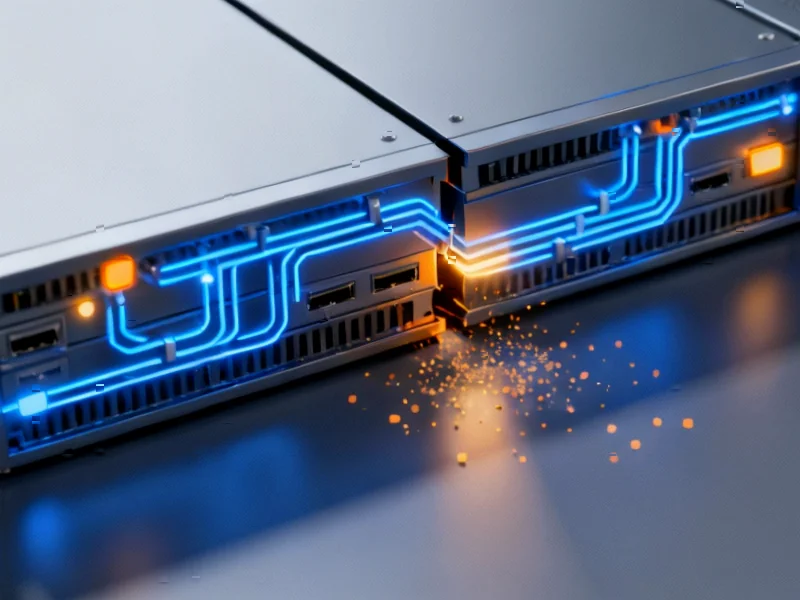Oracle Cloud Embraces AmpereOne M Processors
Oracle Cloud Infrastructure is launching new A4 instances featuring Ampere Computing’s latest CPU technology, according to recent announcements. Sources indicate the instances will utilize the “Polaris” AmpereOne M processor, which has been in volume production since the fourth quarter of 2024. This deployment marks a significant expansion of Arm-based computing options within Oracle’s cloud ecosystem, particularly notable given Oracle’s substantial ownership stake in Ampere Computing.
Technical Specifications and Performance Enhancements
The Polaris AmpereOne M processor features 192 cores and twelve channels of DDR5 memory, according to technical specifications. Analysts suggest this represents a substantial improvement over the previous Siryn AmpereOne chip, which also contained 192 cores but only eight DDR5 memory channels. Reports indicate the Polaris architecture delivers more than 50 percent greater memory bandwidth, a critical enhancement for demanding database operations and AI inference workloads running directly on server processors.
Ampere Computing’s approach to core architecture differs significantly from traditional designs, according to industry observers. The company reportedly avoids hyperthreading technology, believing single-threaded physical cores provide superior security. However, Oracle has implemented a virtualization technique that pairs physical cores to simulate two-threaded cores, making the A4 instances appear similar to traditional x86 processors with hyperthreading capabilities.
Performance Claims and Competitive Positioning
The report states that A4 instances will deliver substantial performance improvements across various workloads. According to the analysis, Oracle claims the new instances provide up to 45 percent better performance for cloud-native applications compared to previous A2 instances. Additionally, sources indicate the A4 instances are expected to deliver approximately 30 percent better price/performance than AMD Epyc-based E6 instances.
Perhaps most notably, Ampere Computing and Oracle reportedly claim significant advantages for AI inference workloads. Running the Llama 3.1 8B transformer model, the A4 instances are said to offer 83 percent better price/performance compared to Nvidia’s four-year-old A10 GPU accelerators. This performance proposition could influence market trends in AI infrastructure deployment.
Memory Safety and Enterprise Application Support
Ampere Computing has incorporated memory tagging extensions into its architecture, which sources indicate enhances security and improves fault recovery. Oracle’s flagship database management system has been ported to leverage these features, according to the company’s statements. Meanwhile, Oracle’s Fusion Applications ERP suite, built using Java, is currently running on existing AI instances and is being migrated to the new A4 infrastructure.
The technological advancements represented by the A4 instances reflect broader industry developments in cloud computing and AI infrastructure. As organizations seek more efficient computing platforms, the emphasis on memory bandwidth and core performance continues to intensify across the technology sector.
Strategic Implications and Future Developments
The deployment comes amid SoftBank’s pending acquisition of Ampere Computing, a transaction reportedly valued at $6.5 billion. Until that deal closes, Ampere Computing continues to operate independently and pursue new customer deployments. The company’s roadmap includes more advanced processors, with the 256-core “Magnetrix” AmpereOne MX chip reportedly in fabrication and the 512-core “Aurora” processor with integrated AI accelerators in development.
According to company statements, the Aurora processor will feature a scalable mesh interconnect and third-generation Ampere cores with enhanced vector processing capabilities. These developments could significantly impact related innovations in high-performance computing and AI infrastructure.
Oracle reportedly has over 1,000 customers using its existing A1 and A2 instances, suggesting strong market acceptance of Arm-based cloud computing. The new A4 instances, available in both bare metal and virtualized configurations beginning in November, represent the latest evolution in this growing ecosystem. As the industry watches recent technology partnerships and acquisitions unfold, the competitive landscape for cloud computing continues to evolve rapidly, with implications for enterprise computing strategies worldwide.
The emergence of specialized processors like the AmpereOne M reflects how industry developments are driving innovation across the computing stack, from hardware architecture to cloud service delivery models.
This article aggregates information from publicly available sources. All trademarks and copyrights belong to their respective owners.
Note: Featured image is for illustrative purposes only and does not represent any specific product, service, or entity mentioned in this article.



